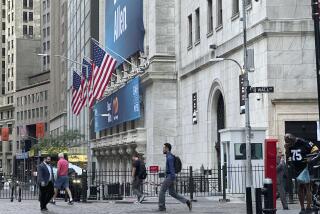Competition, Dreams Power Computer Race
- Share via
If you looked behind the glare of publicity at recent events in the supercomputer business, you could learn a lot about how companies and nations achieve and maintain technological leadership.
Challenge and response, the late, great historian Arnold Toynbee would call it. Others would simply call it competition.
The publicity surrounded Cray Research Corp., the Minneapolis company founded in 1972 by Seymour Cray, a brilliant engineer and original thinker, who left Control Data Corp. and went off on his own to pioneer the technology of supercomputers--very powerful machines capable of 1 billion math calculations per second.
In September this year, Steve Chen, another brilliant engineer and original thinker, left Cray Research because the company refused to back his ambitious attempt to build the most powerful computer yet seen, a machine that could break down a problem, allocate its parts to 64 separate computer processors, solve the problem in parts and put all the solutions back together again for a final result.
What kind of problems need such treatment? Satellite photographs from space, in which billions of digital signals must be assembled to form a recognizable picture, are a present day example. Supercomputers do that all the time for the National Security Agency.
$20-Million Investment
Cray Research hadn’t planned to push the technological frontier with a multiprocessor machine--until Chen left. Then it changed its mind. In November, Seymour Cray, now 62, announced that he would stay on with his firm until 1992 because he was beginning work on the Cray 4, a machine that will have 64 processors.
Meanwhile Chen, 44, was seeking backing for his new company, Supercomputer Systems Inc., which he had set up in Eau Claire, Wis. A week ago, he got that backing when International Business Machines announced a partnership with Chen to build his envisioned computer. IBM didn’t say how much it would invest, but the figure is sure to be $20 million, and probably more.
IBM may have moved, suggests analyst William Easterbrook of Kidder Peabody, the investment firm, because it feared that a Japanese company would back Chen and secure an advantage in the supercomputer competition looming in the 1990s.
NEC, Fujitsu and Hitachi have been turning up the competitive heat, especially NEC, which has sold one supercomputer to a Houston research center and been blocked in selling two others by a U.S. government dumping charge, putting pressure on Massachusetts Institute of Technology and Brigham Young University not to buy heavily discounted NEC computers.
Visionaries Are Needed
U.S. analysts recognize, however, that the Japanese companies have more than price cuts going for them. Their computers are good; their development has been aided by Japanese government research projects, one of which tries to create software to duplicate the processes of the human brain and another that strives for very rapid calculating power.
The competitive threat is real. But with IBM backing Chen, say analysts, the threat is somewhat deflated.
Was it that close? Does U.S. technological leadership rest on the thin shoulders of Steve Chen and Seymour Cray?
On the one hand, no. Supercomputer technology is not developed in a garage. There are hundreds of engineers working on the circuitry and the software, explains analyst Gary Smaby of the Minneapolis brokerage house Piper, Jaffray & Hopwood. Chen, for example, had 204 engineers on his project at Cray, a relatively small $700-million (sales) company. IBM has thousands of researchers in its laboratories. In fact, speculates one observer, IBM may have invested in Chen partly to goad its own engineers with a little competition.
The U.S. government is very much a part of the act, too, with the Pentagon’s Strategic Computing Initiative and other government agencies doing for U.S. companies what Tokyo does for NEC and others.
Yet, all the legions of engineers and government initiatives need one lightning rod, one visionary type like Cray or Chen who sees a new way and pushes out after it. That’s why IBM backed Chen, and why Fujitsu or NEC might well have. That’s why the real frontier in supercomputers, according to analyst Jeffrey Canin of San Francisco’s Hambrecht & Quist, lies with a small company like Thinking Machines Inc., a tiny Cambridge, Mass., firm that is trying to combine the power of 64,000 separate computer processors in a single machine.
What of the future? If you’re talking about the business, the field will grow and become more competitive. Cray Research’s lead--now 60% of the world market--will be under pressure from IBM, Control Data, NEC, and others.
If you’re talking about the technology, it will continue to advance as long as competition supplies the push and original thinkers supply the vision.






